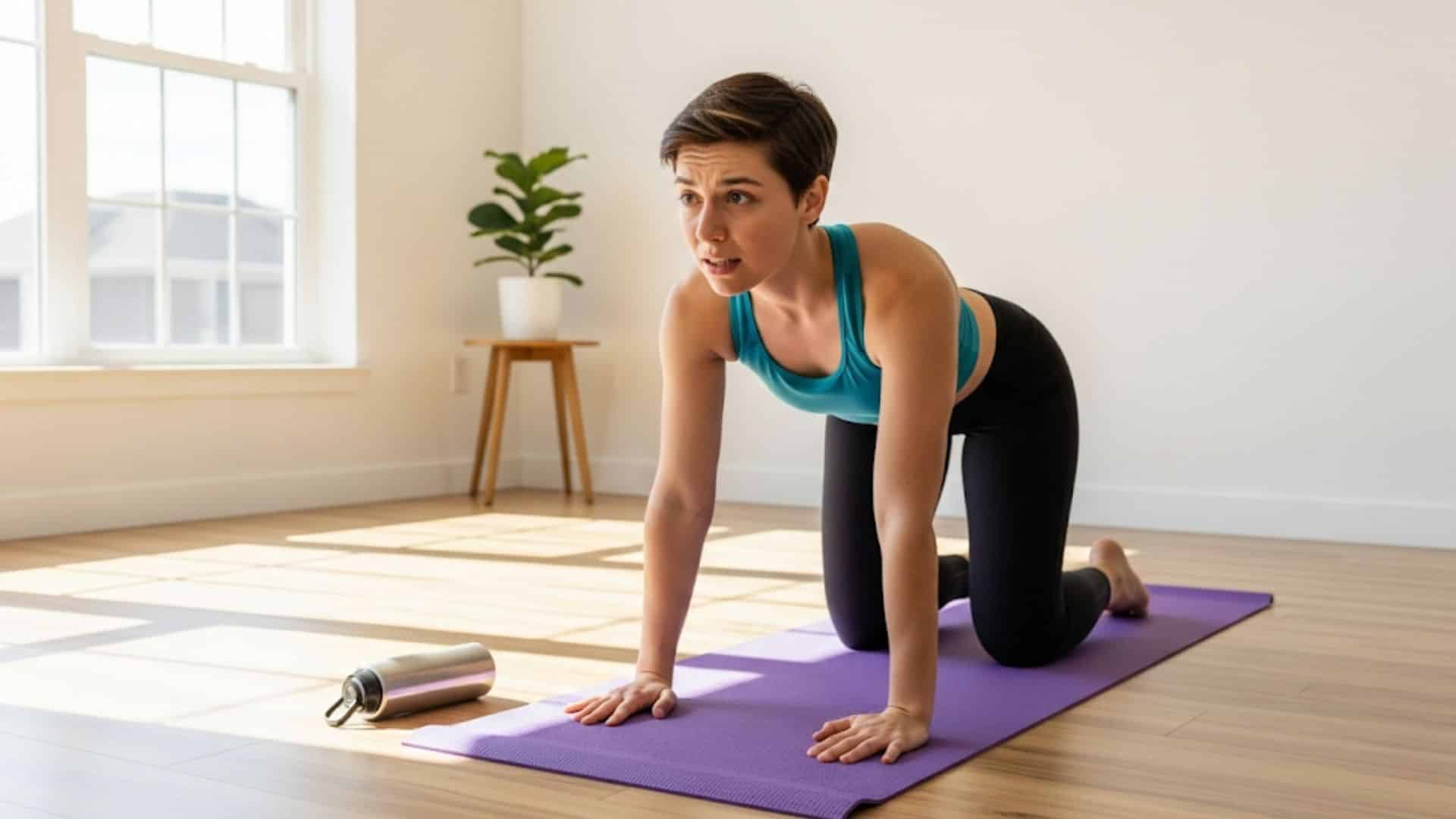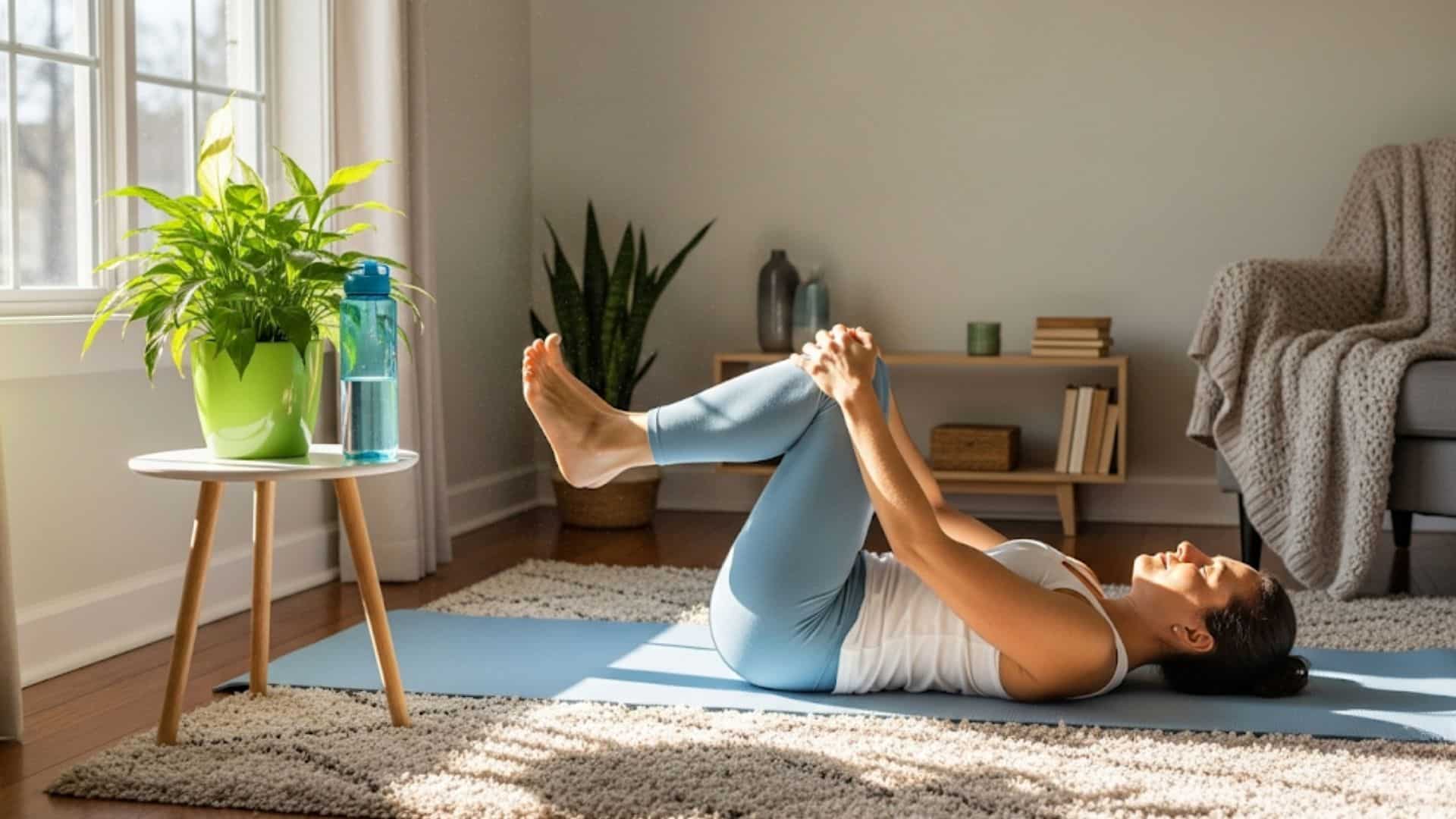Are you tired of feeling uncomfortable and bloated from constipation? Many people reach for pills and medications when their stomach feels stuck.
But exercises for constipation offer a natural way to get things moving again. Your body already knows how to work properly.
Sometimes it just needs gentle help through movement and stretching. Simple poses and stretches can massage your belly from the inside.
You don’t need special equipment or gym memberships to start feeling better. These movements work by encouraging your digestive system naturally without forcing anything.
I’ll show you safe exercises that anyone can do at home today. Movement beats medicine every single time for lasting relief.
How Exercise Helps Relieve Constipation
Exercise helps your body function properly, rather than relying on chemicals to force things. When you move, your muscles gently massage your intestines from the inside.
This natural motion gets everything flowing smoothly without harsh effects. Laxatives only give you quick fixes that don’t last long.
Your body can become dependent on them over time. Exercise builds lasting habits that keep your digestion healthy every single day.
You can do these movements safely as often as you want. There are no severe side effects or warnings to be concerned about. Your body learns to work better on its own.
Exercise also reduces stress, which often causes constipation problems. Moving your body relaxes your mind and helps everything function properly together.
Best Exercises for Constipation Relief
I’ve selected gentle exercises for constipation that can help stimulate your digestive system naturally. These simple exercises for constipation massage your belly and improve blood flow to support healthy bowel function:
1. Happy Baby Pose
Lie flat on your back. Bend your knees and bring them close to your chest. Grab the outsides of your feet with your hands and gently pull your knees toward your armpits.
Keep your back flat on the floor. Relax your head and breathe deeply as you hold the stretch.
Duration: 1 to 2 minutes
2. Knee Hug Stretch
Lie down on your back with your legs extended out straight. Slowly bend one knee and pull it up to your chest with both hands.
Hold it close, feeling a gentle stretch in your belly. Release and repeat with the other leg. This helps ease tension in your belly and lower back.
Duration: 1 to 2 minutes per leg
3. Bicycle Kicks
Lie on your back with your hands behind your head or at your sides. Lift your feet off the floor and move your legs in a slow pedaling motion like riding a bike.
Keep your movements smooth and controlled to massage your tummy and get your intestines working.
Duration: 1 to 3 minutes
4. Child’s Pose
Kneel down and sit back on your heels. Stretch your arms forward along the floor and lower your chest toward the ground.
Rest your forehead on the floor and relax your whole body. Breathe slowly and deeply in this calming pose that soothes the belly and back.
Duration: 2 to 3 minutes
5. Seated Forward Bend
Sit with your legs stretched straight in front of you. Keep your back straight and reach forward slowly, trying to touch your toes.
Stretch gently without forcing yourself. This helps massage your belly and stretch your back muscles, aiding better digestion.
Duration: 1 to 2 minutes
6. Supine Twist
Lie flat on your back and bring both knees to your chest. Extend one leg while twisting your bent knee across your body to the opposite side.
Turn your head in the opposite direction and rest your arms out to the sides. This twisting motion helps relieve belly discomfort and promotes bowel movement.
Duration: 1 to 2 minutes per side
7. Bow Pose
Lie on your stomach with knees bent. Reach back with your hands and hold your ankles. Lift your chest and thighs off the floor, arching your back gently.
Keep your gaze forward and breathe deeply. This stretch opens up the belly and helps stimulate digestion.
Duration: 20 to 30 seconds
8. Hip Adductor Stretch
Lie on your back with your arms and legs extended wide apart like a star. Keep your body relaxed.
This gentle stretch helps relax your abdominal muscles and improves blood flow to the hips, which can enhance bowel activity.
Duration: 1 to 2 minutes
9. Standing Side Stretch
Stand tall and reach your arms overhead. Slowly lean your upper body to one side, feeling a stretch along your waist and belly.
Hold the stretch softly, then repeat on the other side. This movement loosens your torso and helps your digestive system work better.
Duration: 1 to 2 minutes per side
How Soon Can You Expect Relief?
Exercises for constipation can provide varying timelines for symptom improvement depending on the approach and individual factors.
Immediate relief may occur within 15-30 minutes through gentle walking or knee-to-chest stretches that stimulate bowel movement through gravity and abdominal pressure. However, consistent long-term benefits typically develop after 1-2 weeks of regular physical activity.
Sedentary individuals often experience the fastest initial results since any increase in movement significantly impacts their sluggish digestive systems.
Post-meal exercisers also see quicker relief, as light activity within 30 minutes after eating enhances gastric motility and promotes natural peristalsis.
Additional Lifestyle Tips to Support Constipation Exercises

Maximizing the effectiveness of constipation exercises requires strategic lifestyle adjustments that work synergistically with physical movement to promote optimal digestive health.
- Drink Warm Water Before Exercising: Helps stimulate the digestive tract and enhances bowel movement preparation.
- Time Workouts for Morning or Post-Meal Periods: Leverages natural circadian rhythms and gastrocolic reflex for maximum impact.
- Combine Movement With High-Fiber Foods: Pair exercises with fruits, vegetables, and whole grains to boost stool bulk and motility.
- Maintain Consistent Hydration Throughout the Day: Aim for 8-10 glasses of water to keep stool soft and the digestive system flowing.
- Create a Routine Combining Deep Breathing With Gentle Stretches: Activates the parasympathetic nervous system while physically massaging abdominal organs.
These complementary strategies amplify exercise benefits and establish sustainable habits that support long-term digestive wellness and regularity.
When to See a Doctor?
It’s important to seek medical advice if constipation lasts longer than two weeks despite home treatments. Persistent constipation can indicate an underlying health issue that requires professional evaluation.
Additionally, urgent medical attention is needed if constipation is accompanied by severe abdominal pain, rectal bleeding, or sudden and unexplained weight loss.
These symptoms may signal more serious conditions such as infections, gastrointestinal disorders, or even cancers.
Never ignore persistent or worsening symptoms; timely consultation with a healthcare provider ensures you receive the appropriate care and guidance tailored to your specific situation.
That’s a Wrap!
These exercises for constipation give you natural relief without harsh side effects or dependency risks. You now have simple movements that work with your body, rather than against it.
Remember to start slowly and listen to what feels right for your body. Drink water and add healthy habits to boost your results even more.
Consistency matters more than perfection when doing these gentle stretches. Your digestive system will thank you for choosing natural movement over quick fixes.
Take time to relax and reduce stress in your daily routine. Start with just one exercise today and build from there. Drop a comment below sharing which exercise feels most comfortable for your body at the moment.





